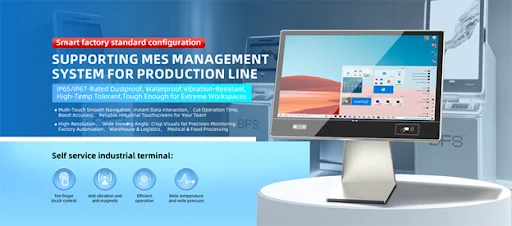Sustainable PCB Manufacturing: Shaping the Future of Electronics
In the quest for greener technology, sustainable practices in PCB manufacturing are gaining prominence as the industry strives to minimize its environmental impact. For any PCB manufacturer, adopting eco-friendly methods is no longer optional—it’s a strategic necessity in a world increasingly driven by sustainability. With the global demand for electronics continuing to rise, implementing sustainable processes helps ensure resource conservation, energy efficiency, and waste reduction. Alongside innovations such as advanced wire bonding options, sustainability is redefining how printed circuit boards are designed, produced, and managed across their entire lifecycle.
1. Sustainable Materials: The Foundation of Eco-Friendly PCBs
The journey toward sustainable PCB production begins with smarter material choices. Traditional materials like FR4—composed of epoxy resin and glass fiber—offer durability but pose challenges in recycling and disposal.
Key Innovations:
-
Adoption of bio-based substrates and recyclable polymers
-
Use of non-toxic inks and adhesives to replace harmful chemicals
These changes reduce environmental impact while maintaining high performance standards.
2. Reducing Energy Consumption in PCB Production
PCB manufacturing processes such as imaging, etching, and soldering are highly energy-intensive. Embracing renewable energy and energy-efficient equipment is crucial for minimizing carbon emissions.
Sustainable Approaches:
-
Installation of solar panels or wind turbines in production facilities
-
Utilization of low-power machinery and low-temperature soldering techniques
These practices not only conserve energy but also improve product longevity by reducing thermal stress.
3. Conserving Water Through Advanced Recycling Systems
Water is a critical resource in PCB manufacturing, especially during cleaning and chemical treatments. Traditional practices often result in excessive freshwater usage and waste.
Water-Saving Solutions:
-
Implementation of closed-loop water recycling systems
-
Use of advanced filtration methods like reverse osmosis and ion exchange
These innovations help manufacturers reduce water dependency and operational costs.
4. Managing Chemical Waste Responsibly
Chemical processes such as plating and etching can generate hazardous waste, which poses a significant environmental threat if improperly handled.
Best Practices:
-
Deployment of closed-loop chemical recovery systems
-
Recycling and reuse of chemicals to minimize hazardous disposal
This strategy supports a circular manufacturing model, reducing raw chemical usage and waste output.
5. Smart PCB Design for Sustainability
Design optimization plays a key role in minimizing environmental impact. Design-for-environment (DfE) principles encourage engineers to create PCBs that are efficient, compact, and easy to recycle.
Sustainable Design Practices:
-
Reducing layer count and using smaller trace footprints
-
Creating modular, repairable PCBs to extend product life
These designs reduce material consumption and contribute to more sustainable end products.
6. Eco-Conscious Wire Bonding Options
Wire bonding remains a critical aspect of PCB assembly. Innovations in bonding methods help cut down on material waste while maintaining performance.
Greener Alternatives:
-
Copper wire bonding as a sustainable and cost-effective substitute for gold
-
Precision bonding techniques that minimize material usage
These practices enhance product efficiency and reduce overall environmental impact.
7. Promoting Recycling and End-of-Life Management
Electronic waste (e-waste) is a growing global issue. Incorporating recycling and reuse strategies at the design stage ensures a responsible end-of-life process for PCBs.
End-of-Life Solutions:
-
Designing boards for easy disassembly and component recovery
-
Partnering with certified e-waste recycling facilities to extract valuable materials
These measures reduce landfill waste and support the reuse of metals like copper and gold in the supply chain.
8. Automation and Digitalization for Smarter Sustainability
Advanced technologies like AI and IoT are revolutionizing manufacturing, enabling real-time insights and operational optimization.
Key Technologies:
-
AI-driven process monitoring to reduce waste and inefficiencies
-
Predictive maintenance systems to lower energy usage and equipment failure
-
Digital twins to test processes virtually, conserving resources and reducing trial waste
These tools significantly contribute to a more streamlined, sustainable production line.
Read Also: Rigid Flex PCB vs. Flex PCB: Their Similarities and Differences
9. Meeting Environmental Standards and Regulations
Staying compliant with environmental regulations is both a legal requirement and a trust-building strategy.
Industry Certifications:
-
ISO 14001 for Environmental Management Systems
-
RoHS compliance to restrict hazardous substances
Following these standards helps manufacturers demonstrate their commitment to environmental stewardship.
10. Economic and Competitive Advantages of Going Green
Beyond environmental benefits, sustainable PCB practices offer substantial cost savings and market differentiation.
Business Benefits:
-
Reduced spending on raw materials, water, and energy
-
Attraction of eco-conscious customers and partners
-
Enhanced brand reputation in a sustainability-driven market
Eco-friendly manufacturing isn’t just ethical—it’s smart business.
Conclusion: The Future of PCB Manufacturing Is Sustainable
Sustainable PCB manufacturing marks a transformative shift in the electronics industry. From material efficiency and energy conservation to design innovation and responsible recycling, these practices are shaping a greener, more efficient future.
Embracing sustainability is no longer optional—it’s a strategic imperative. By committing to environmentally responsible practices today, PCB manufacturers can secure long-term growth, meet rising regulatory demands, and help preserve our planet for generations to come.

Business Checking Account Options for Modern Entrepreneurs

Why Businesses Require Inspection of an LPG Tank

Cost of Private 5G and Private LTE Networks: What Should Businesses Choose

Accelerating drug discovery through the DEL-ML-CS approach

AI in Marketing Is No Longer a Buzzword — It’s the Strategy

A Complete Guide to Enclosed 3D Printers: How to Choose the Right Model

Top 10 Mods and Maps That Made CS 1.6 Unforgettable

IP65 Waterproof Panel PCs: Ultimate Protection for Industrial Operations








